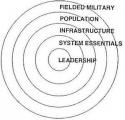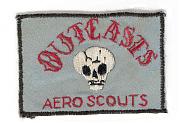I have to disagree with almost everything in this comment. "Airpower" is certainly not guided missiles and no, not any airframe will do. Missiles cannot do everything. There are limitations imposed by the laws of physics (particularly for air-to-ground weapons) that limit the utility of missiles or necessitate the utilization of tactics to employ them properly - tactics which are highly dependent on the capabilities of the airframe. In the Air-to-Air arena, the F-15 and the F-22 can utilize the exact same missiles, yet the F-22 handily beats the F-15 every time despite the fact that all other factors (training, starting positions) are equal. One might suggest, therefore, that airframe capabilities matter.
As for UCAV's there are many technical hurdles still to go, particularly with the comm link which must be completely secure, redundant and immune to jamming and interference (aircraft falling out of the sky like predators sometimes do is a bad thing). UCAV's would depend on either satellite or LOS comm links which introduce vulnerabilities that manned aircraft do not have. These challenges and others which will go unmentioned probably will be solved at some point, but I don't think the 90% figure is coming anytime soon.
In my mind (and I would love CAVGUY's opinion on this), making tanks unmanned would be much easier than a fighter aircraft. Without the necessity to protect a four-person crew, an unmanned tank would be smaller , lighter (and hence more deployable), possibly cheaper and expendable. An unmanned fighter would put one less pilot at risk, but an unmanned tank would put four fewer soldiers at risk.
Fuchs,
What is this mystery weapon that you speak of that is cheaper than a Manpad? MANPADS have limitations which is why they are cheap, but even here the AF takes the manpad threat very seriously and continuously upgrades its IR-missile countermeasures - much more than the other services, in fact, except for the special ops aircraft.If I was head of the U.S.A.F., I'd much less care about the F-22 than about new, low munition cost (lower than a Stinger shot) battlefield air defenses.
As for your other points, yes fixed targets are very easy to destroy - it's the mobile targets that have been vexing air-to-ground planners for two decades now and is a big reason persistent ISR platforms were originally created. Drones like predator work great in permissive environments, but they cannot operate without air supremacy (See here and here).
WM,
I'm not sure why you would think that, but then again I think the comparison is fundamentally flawed to begin with.When I think of F22s and F35s, why do I have visions of French knights struggling against a hail of English arrows at Crecy, Poitiers or Agincourt? Sometimes the best tech is not hi-tech.
Assuming the F-22 is a "one trick pony," which it is not, why is that inherently bad?I am not disputing the desirabilty of air superiority. However, a "one trick pony" is unlikely to win in the long run. At Poiters, Edward the Black Prince need a detachment of mounted forces to complete the victory and cover the archers when they ran out of arrows.
That is undoubtedly true in mostinstances to a point, but there comes a time when technology trumps training. Additionally, the argument against having better technology than our adversaries seems to carry the assumption that our side will always have superior training, tactics and leadership.The point I was making with my references to the British victories during the Hundred Years War is that technology, in and of itself is not decisive. The British won because of skilled leadership and tactics.
Steve,
Today's CAS ain't your daddy's CAS. I don't understand the myth that persists that CAS is something that inherently is best delivered at low altitude from a slow aircraft. One only needs to look at what's currently going on in theater to put that myth to rest. CAS is both more effective and more accurate when delivered from medium altitudes utilizing precision weapons and sensor technology. This is out of the envelope of most AAA and at the edge of the MANPAD threat which is not only safer, but also allows the pilot to to place more concentration on what's happening on the ground.People forget sometimes that the majority of aircraft lost over NVN were knocked down by anti-aircraft guns. SAMs drew a great deal of attention, but AA was impossible to jam and could be harder to knock out. And in CAS you can spend a fair amount of time down in the AA zone (unless you're using expensive standoff munitions...something that might not always be possible). While an A-10 can survive multiple hits, I don't think it's really clear that an inherently unstable fly by wire aircraft like the F-22 or F-35 could. And if not, will the AF (and other services) be willing to risk those high-dollar assets for a mission that they're not too crazy about to begin with?




 )
)

 Even if we had the money to spend it is a poor choice to risk airframe and pilot over hostile area or air space when all you need is a missile. Many in the Air Force understand this and if Uncle Bob hangs around long enough you may see some of them come to power and you will see a more powerful Air Force that is more useful and costs less. Aviation Week article from 2002 with quotes from Colonel Warden on how Air Force will become 90% Unmanned Combat Air Vehicles....
Even if we had the money to spend it is a poor choice to risk airframe and pilot over hostile area or air space when all you need is a missile. Many in the Air Force understand this and if Uncle Bob hangs around long enough you may see some of them come to power and you will see a more powerful Air Force that is more useful and costs less. Aviation Week article from 2002 with quotes from Colonel Warden on how Air Force will become 90% Unmanned Combat Air Vehicles....



 plane without the pilot! it can attack any target air ,land or sea. Should be our answer to the suicide bomber.
plane without the pilot! it can attack any target air ,land or sea. Should be our answer to the suicide bomber.



Bookmarks